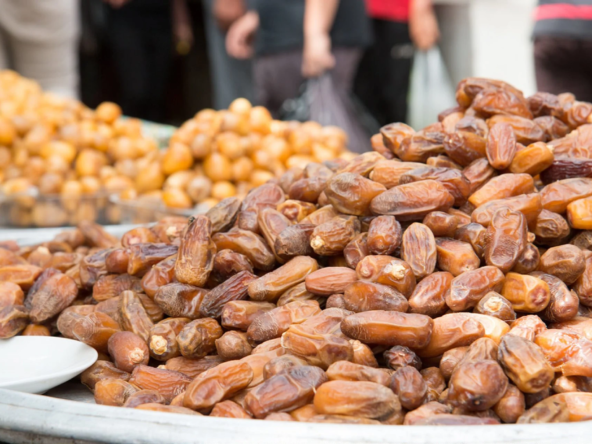Arabic gum, also known as gum arabic, is a natural resin harvested from the Acacia Senegal and Acacia Seyal trees. Renowned for its versatile applications and rich history, Arabic gum has been a prized substance for centuries. In this comprehensive blog post, we will explore everything you need to know about Arabic gum, from its origins and harvesting methods to its various uses and potential health benefits.
I. Origins and Harvesting
A. The Acacia Trees
- Native Habitat: The Acacia Senegal and Acacia Seyal trees are primarily found in the arid regions of the African Sahel, stretching across countries like Sudan, Senegal, Chad, and Nigeria.
- Resin Production: Arabic gum is extracted through a unique process known as exudation, where the trees produce the resin to heal wounds caused by insects or environmental stress.
B. Harvesting Techniques
- Tapping: Harvesters make small incisions in the bark of the Acacia trees, allowing the gum to ooze out and solidify into droplets.
- Sustainable Practices: Efforts to promote sustainable harvesting methods, such as tapping only specific trees and allowing them time to recover, have become essential to protect the long-term viability of Arabic gum production.
II. Composition and Properties
A. Chemical Composition
- Polysaccharides: Arabic gum is composed mainly of complex polysaccharides, including arabinose, galactose, and rhamnose.
- Glycoproteins: The resin also contains glycoproteins, which contribute to its unique properties.
B. Physical Properties
- Solubility: Arabic gum is highly soluble in water, forming a clear, colorless solution.
- Viscosity: The gum’s viscosity makes it a valuable thickening agent in various industries.
III. Historical Significance
A. Ancient Uses
- Traditional Medicine: Arabic gum has a long history of use in traditional medicine for its perceived health benefits, such as soothing respiratory issues and promoting digestive health.
- Cultural and Religious Practices: The resin has played a role in various cultural and religious rituals, symbolizing purity and spiritual significance in certain traditions.
B. Trade Routes
- Trans-Saharan Trade: Arabic gum was a crucial commodity along the historic trans-Saharan trade routes, connecting Africa to the Middle East and beyond.
- Global Commerce: The resin’s popularity transcended continents, becoming a sought-after item in international trade.

IV. Commercial Applications
A. Food and Beverage Industry
- Emulsification: Arabic gum is a natural emulsifier, enhancing the stability of food and beverage products.
- Flavor Encapsulation: The resin is used to encapsulate and protect flavors in the food industry.
B. Pharmaceutical and Cosmetics
- Binder and Stabilizer: Arabic gum serves as a binder and stabilizer in pharmaceutical formulations and cosmetics.
- Film-Forming Agent: Its film-forming properties make it valuable in the production of coatings for pills and cosmetic products.
C. Printing and Textiles
- Ink Production: Arabic gum is a key ingredient in the formulation of inks, providing stability and viscosity.
- Fabric Printing: The resin is employed in textile printing, acting as a thickening agent for dyes.
V. Health Benefits and Research
A. Prebiotic Properties
- Gut Health: Some studies suggest that Arabic gum may act as a prebiotic, promoting the growth of beneficial gut bacteria.
- Potential Anti-Inflammatory Effects: Research indicates that the resin may possess anti-inflammatory properties, making it a subject of interest in the field of health and wellness.
B. Blood Sugar Regulation
- Impact on Glycemic Control: Preliminary studies explore the potential role of Arabic gum in regulating blood sugar levels, presenting potential benefits for individuals with diabetes.
- Fiber Content: The gum’s high fiber content contributes to its potential positive effects on blood sugar levels.
VI. Challenges and Sustainability
A. Environmental Concerns
- Deforestation: Uncontrolled harvesting practices can lead to deforestation and the depletion of Acacia tree populations.
- Conservation Efforts: Organizations and governments are working to implement sustainable harvesting practices and protect the natural habitats of Acacia trees.
B. Market Trends
- Price Volatility: The Arabic gum market can experience fluctuations in prices due to various factors, including environmental conditions and geopolitical events.
- Alternative Sources: Researchers are exploring alternative sources of gum arabic to reduce dependence on wild harvesting and mitigate environmental impact.
Conclusion
Arabic gum stands as a testament to the intricate relationship between nature and human ingenuity. From its ancient uses in traditional medicine to its indispensable role in modern industries, the resin continues to shape our world in profound ways. As we delve deeper into the intricate web of chemistry, history, and commerce surrounding Arabic gum, it becomes evident that this golden resin is not just a substance but a cultural, historical, and scientific marvel that continues to captivate and contribute to our lives in multifaceted ways.
Ajigofarms is a reliable global agricultural purchase sourcing with profound expertise in the manufacturing, and exportation of food crops. We are tested, and trusted suppliers of all kinds of cash crops and food crops. Our constant supply chain solution makes exporting easy, quick, and safe, we are identified with timeliness and meeting up with deadlines. Regardless of the region you are located in worldwide, you can reliably order your Agric products and be rest assured of successful delivery.




